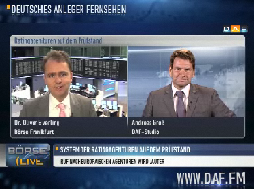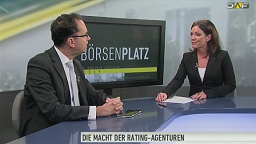« Zertifikateratings für alle | Home | Ratingprognosen bei der Investkredit Bank AG »
Do the Agencies Influence Each Other?
Von Dr. Oliver Everling | 21.April 2008
Since the rating agencies are not always candid about their methods and procedures, issuers tend to have many questions. „GIA answers them in person with clients or through the medium of this Bulletin“, says Roger P. Nye, President, Global Investment Advisors, Inc., Carlsbad, California, USA (www.gia-inc.com). Analysts and rating committees do not have the time or inclination to follow the ups and downs of the other agencies‘ rating actions. They do not waste effort trying to match the others‘ ratings. It would be a serious skewing of their priorities and, if discovered by the market, a serious blow to their credibility. They are aware that such activity would compromise their integrity and their independent voices, believes Nye. Any hint of „matching“ behavior would hurt their carefully built image of independent and unbiased judgment.
While analysts are certainly aware of the other agencies‘ ratings, this knowledge does not drive their own rating decisions. Rating committees are interested when the other agency initiates a new rating product or announces a rating change, but they are not necessarily persuaded to adopt the same approach or view. If one agency lowers a rating first, the other agency may take a closer look at the credit to see if they have overlooked something, but this does not mean the second agency will follow suit. And even if the second agency does change the issuer’s rating, it may happen for different reasons. Moody’s, for example, does not mind being the agency with the lowest ratings in the market and even relishes its „investor-friendly“ reputation.
There are instances, reports Nye, where both Moody’s and S&P do appear to move in tandem with ratings. But that is because both agencies (1) evaluate the same information with virtually identical methodology and understand when the fundamentals change; (2) tend to meet with issuers around the same time of the year, post-budget or post-annual report; and (3) tend to move ratings as soon as they can justify it to show they are on top of matters. Concurrent rating actions also tend to occur for first-time issues and for event-driven downgrades, such as a large, debt-financed acquisition or massive capital flight. But the agencies certainly do not coordinate rating announcements.
Themen: Nachrichten | Kein Kommentar »
Kommentare
Sie müssen eingelogged sein um einen Kommentar zu posten.
 Börse hören. Interviews zu aktuellen Ratingfragen im Börsen Radio Network. Hier klicken für alle Aufzeichnungen mit Dr. Oliver Everling seit 2006 als Podcasts.
Börse hören. Interviews zu aktuellen Ratingfragen im Börsen Radio Network. Hier klicken für alle Aufzeichnungen mit Dr. Oliver Everling seit 2006 als Podcasts.











